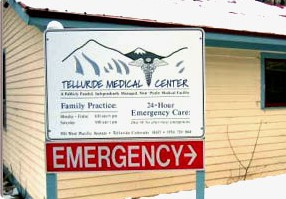
13 Mar YOUR MEDICAL MOMENT: HANTA VIRUS 101
Telluride Inside… and Out is proud to feature the Telluride Medical Center’s MEDICAL MOMENT, a weekly column that answers common medical questions in pop culture. Have a question for the doctors? Click here to send.
DR. PAUL KOELLIKER answers this week’s question: WHAT IS HANTAVIRUS AND HOW TO AVOID IT
HANTAVIRUS HISTORY
In 1993, a cluster of deaths occurred in the Four Corners area of the United States. Many of the cases occurred on the Navajo Nation.
Thorough and rapid investigation of the event by the CDC, the military, the Indian Health service, and the New Mexico office of medical investigations revealed a new virus as the pathogen.
The host was found to be the deer mouse (Peromyscus maniculatus). Exposure to rodents and particularly their excrement was a common risk factor.
The new virus was initially named the Muerto Canyon virus, but later re-named the Sin Nombre virus (SNV).
The recent outbreak of Hantavirus in Yosemite National Park has increased the public’s concerns about Hantavirus Pulmonary Syndrome (HPS). There were 10 cases that were attributed to exposure in a camp in Yosemite, three of whom died from the disease. Although rare, HPS has a mortality rate reported to be between 36 and 60%. Knowledge of the disease and its exposure can help individuals mitigate the risk of contracting this serious illness.
The Sin Nombre virus (SNV) is a member of the virus family Bunyaviridae and causes HPS. There are other Hantaviruses that cause different illnesses found in other parts of the world, most notably hemorrhagic fevers and kidney disease. There have been no reported cases of person to person transmission of the Sin Nombre virus. There has been a reported case of person to person transmission of a different Hantavirus (one that does not cause HPS) in South America.
HOW INFECTION HAPPENS
People become infected through exposure to excrement from rodents that carry the virus. The deer mouse is the most common vector, but other rodents can carry and transmit the disease. The disease seems to occur in sporadic outbreaks that may be created by environmental conditions that affect the rodents. A year with heavy rain/snowfall after several years of drought which can cause a rapid increase in the size of the rodent population has been suggested. The SNV and its associated HPS are not a new disease, but have just been discovered recently. Analysis of remains of individuals who died from mysterious pulmonary illnesses, have shown the virus to predate the 1993 outbreak. Also, traditional Navajo medicine includes this illness and attributes contracting it from contact with rodents.
SYMPTOMS
HPS has a long incubation period and can occur 1 to 5 weeks after exposure. Initial symptoms mimic common viral illnesses including common ones like influenza. Fever and myalgias (aching muscles) are common. Headaches, nausea, vomiting, and abdominal pain are also symptoms. 4 to 10 days after the onset of the aforementioned symptoms, the pulmonary syndrome develops. Chest tightness, shortness of breath and patients’ lungs filling with fluid occur next. The illness rapidly develops and is often fatal despite modern medical care. Early medical intervention including Intensive care and respiratory support (mechanical ventilation) may help a patient’s chance of survival. There are no rapid tests for the virus, and isolation of SNV as a cause of a patient’s symptoms can take time. Diagnosis and treatment are made on clinical suspicion, and history of exposure. There have been 617 cases of HPS identified in 34 states as of 2013, and 268 of the cases have been reported in the Four Corners states ( NM 91, CO 79, UT 33, AZ 65).
PREVENTION
Prevention consists mainly of protecting oneself from exposure to rodent excrement. Storing food carefully, sealing up holes and other entry points in homes, and protecting oneself with adequate ventilation and a mask when cleaning up rodent infested areas. Prolonged exposure, such as sleeping in areas that are rodent infested, can increase the chance of illness. Trapping and removal or extermination of rodents may be necessary to insure a safe environment. This is an uncommon disease that we have probably lived in contact with for a very long time. If you see a mouse or its droppings it is very unlikely to cause illness. However, we live in an area where this disease is more prevalent than other parts of the world and precautions should be taken when possible to try to prevent contracting this often deadly infection
Editor’s note: The Telluride Medical Center is the only 24-hour emergency facility within 65 miles. You can choose your own medical provider visit with a specialist or take advantage of their Mountain Skin Care services. As a mountain town in a challenging, remote environment, a thriving medical center is vital to our community’s health.
For more Medical Moments on TIO, Click Here.




Sorry, the comment form is closed at this time.